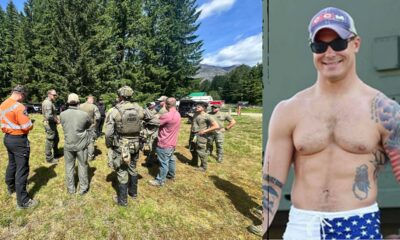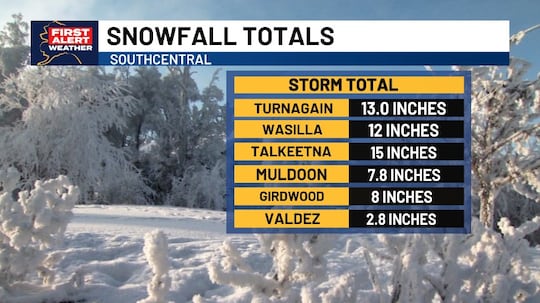Alaska
Alaska Senate passes draft budget, confirming $175 million in bonus public-school funding • Alaska Beacon
The Alaska Senate on Wednesday approved a draft $12.25 billion state operating budget and in the process, finalized legislative plans to offer public schools a one-time, $175 million funding bonus.
The Senate’s proposed Permanent Fund dividend is about $1,580 per recipient, including an estimated $222 energy relief payment. That’s below the $2,270 figure included in a competing draft passed by the House, and the final figure will be subject to further debate.
The smaller amount reduces the risk of the state spending down savings.
“We’re living within our means. This is what it looks like,” said Sen. Bert Stedman, R-Sitka and co-chair of the Senate Finance Committee.
Stedman said the budget balances if the state’s oil production hits estimates and if North Slope oil prices average $78 per barrel between July 1, 2024, and June 30, 2025.
Oil and other sources of revenue would be enough to pay for state operations, as well as new legislation and the state’s capital budget, which pays for construction and renovation projects statewide.
Wednesday’s 17-3 vote, which follows the state House’s passage of its own draft operating budget, triggers the final phase of the Alaska Legislature’s annual budget process, where legislators negotiate a compromise between the two drafts.
In places where the drafts match, the relevant item is final, except that Gov. Mike Dunleavy has the ability to reduce or eliminate final items with his line-item veto power. He cannot increase them or add new ones.
On education, the Senate included a $680 one-time boost to the state’s Base Student Allocation, the core of Alaska’s per-student funding formula.
That’s worth about $175 million statewide, and the same language is in the House’s draft budget, making the item final, except for the governor.
Last year, Dunleavy vetoed half of an identical one-time boost, but in a news conference with reporters on Wednesday, the governor signaled that he may not repeat his veto.
“I’ve told people I’m open to the increase,” Dunleavy said, “an increase in one-time funding, especially to help with the inflationary issues.”
The Senate budget also includes a House-adopted plan to spend $5.2 million more on reading programs for students in kindergarten through third grade.
Senators included additional money for student transportation, something that will have to be negotiated with the House, which did not include it.
Also subject to further negotiation is $11.9 million in education money added after the federal Department of Education warned that the state underfunded some school districts during the COVID-19 pandemic.
The Senate is led by a supermajority of nine Democrats and eight Republicans, and Wednesday’s draft budget was crafted by that supermajority.
Before the final vote, the three Republicans outside the majority offered 21 amendments containing a variety of priorities, but all failed.
The most contentious amendments dealt with the amount of this year’s Permanent Fund dividend, which Stedman labeled “the focal point of most budgets.”
Sen. Mike Shower, R-Wasilla, proposed taking extra money from the Alaska Permanent Fund to increase the Senate’s proposed dividend to a figure above the House’s amount, once the energy relief payment is included.
While much of the fund is constitutionally protected, lawmakers need only a simple majority to break a law that limits spending from the fund’s earnings reserve, which contains money accumulated from the fund’s investments.

Shower said his proposed dividend is what was recommended by a bipartisan, bicameral working group and implied that passage could encourage work on a plan to bring the state’s long-term finances into balance.
He had support from Sen. Shelley Hughes, R-Palmer, who said, “If we were to pass this, we would start on the road toward a fiscal plan.”
But a majority of other senators opposed the idea. Stedman said he believed the amendment would instantly create a billion-dollar deficit.
“I don’t think this is a prudent amendment,” he said.
Sen. Forrest Dunbar, D-Anchorage, said he’d like to see larger dividends, but thus far, the Legislature hasn’t advanced other needed components of the financial plan, including new state revenue.
Shower’s amendment failed, 6-14.
The House and Senate are expected to appoint lawmakers to a budgetary conference committee on Monday, starting work on a final budget draft.
The budget is typically the final item passed before the Legislature adjourns for the summer.
GET THE MORNING HEADLINES DELIVERED TO YOUR INBOX

Alaska
National Native helpline for domestic violence and sexual assault to open Alaska-specific service
Alaska
Dozens of vehicle accidents reported, Anchorage after-school activities canceled, as snowfall buries Southcentral Alaska

ANCHORAGE, Alaska (KTUU) – Up to a foot of snow has fallen in areas across Southcentral as of Tuesday, with more expected into Wednesday morning.
All sports and after-school activities — except high school basketball and hockey activities — were canceled Tuesday for the Anchorage School District. The decision was made to allow crews to clear school parking lots and manage traffic for snow removal, district officials said.
“These efforts are critical to ensuring schools can safely remain open [Wednesday],” ASD said in a statement.
The Anchorage Police Department’s accident count for the past two days shows there have been 55 car accidents since Monday, as of 9:45 a.m. Tuesday. In addition, there have been 86 vehicles in distress reported by the department.
The snowfall — which has brought up to 13 inches along areas of Turnagain Arm and 12 inches in Wasilla — is expected to continue Tuesday, according to latest forecast models. Numerous winter weather alerts are in effect, and inland areas of Southcentral could see winds up to 25 mph, with coastal areas potentially seeing winds over 45 mph.
Some areas of Southcentral could see more than 20 inches of snowfall by Wednesday, with the Anchorage and Eagle River Hillsides, as well as the foothills of the Talkeetna Mountain, among the areas seeing the most snowfall.
See a spelling or grammar error? Report it to web@ktuu.com
Copyright 2026 KTUU. All rights reserved.
Alaska
Yundt Served: Formal Charges Submitted to Alaska Republican Party, Asks for Party Sanction and Censure of Senator Rob Yundt

On January 3, 2026, Districts 27 and 28 of the Alaska Republican Party received formal charges against Senator Rob Yundt pursuant to Article VII of the Alaska Republican Party Rules.
According to the Alaska Republican Party Rules: “Any candidate or elected official may be sanctioned or censured for any of the following
reasons:
(a) Failure to follow the Party Platform.
(b) Engagement in any activities prohibited by or contrary to these rules or RNC Rules.
(c) Failure to carry out or perform the duties of their office.
(d) Engaging in prohibited discrimination.
(e) Forming a majority caucus in which non-Republicans are at least 1/3 or more of the
coalition.
(f) Engaging in other activities that may be reasonably assessed as bringing dishonor to
the ARP, such as commission of a serious crime.”
Party Rules require the signatures of at least 3 registered Republican constituents for official charges to be filed. The formal charges were signed by registered Republican voters and District N constitutions Jerad McClure, Thomas W. Oels, Janice M. Norman, and Manda Gershon.
Yundt is charged with “failure to adhere and uphold the Alaska Republican Party Platform” and “engaging in conduct contrary to the principles and priorities of the Alaska Republican Party Rules.” The constituents request: “Senator Rob Yundt be provided proper notice of the charges and a full and fair opportunity to respond; and that, upon a finding by the required two-thirds (2/3) vote of the District Committees that the charges are valid, the Committees impose the maximum sanctions authorized under Article VII.”
If the Party finds Yundt guilty of the charges, Yundt may be disciplined with formal censure by the Alaska Republican Party, declaration of ineligibility for Party endorsement, withdrawal of political support, prohibition from participating in certain Party activities, and official and public declaration that Yundt’s conduct and voting record contradict the Party’s values and priorities.
Reasons for the charges are based on Yundt’s active support of House Bill 57, Senate Bill 113, and Senate Bill 92. Constituents who filed the charges argue that HB 57 opposes the Alaska Republican Party Platform by “expanding government surveillance and dramatically increasing education spending;” that SB 113 opposes the Party’s Platform by “impos[ing] new tax burdens on Alaskan consumers and small businesses;” and that SB 92 opposes the Party by “proposing a targeted 9.2% tax on major private-sector energy producer supplying natural gas to Southcentral Alaska.” Although the filed charges state that SB 92 proposes a 9.2% tax, the bill actually proposes a 9.4% tax on income from oil and gas production and transportation.
Many Alaskan conservatives have expressed frustration with Senator Yundt’s legislative decisions. Some, like Marcy Sowers, consider Yundt more like “a tax-loving social justice warrior” than a conservative.
Related
-

 News1 week ago
News1 week agoFor those who help the poor, 2025 goes down as a year of chaos
-

 Detroit, MI4 days ago
Detroit, MI4 days ago2 hospitalized after shooting on Lodge Freeway in Detroit
-
Georgia1 week ago
Best in Georgia: 2025 AJC Varsity high school football all-state teams
-

 Dallas, TX3 days ago
Dallas, TX3 days agoDefensive coordinator candidates who could improve Cowboys’ brutal secondary in 2026
-

 Detroit, MI1 week ago
Detroit, MI1 week agoWith 46k outages around Michigan, Metro Detroit prepares for power loss
-

 Southeast1 week ago
Southeast1 week agoMurder in small-town America: The crimes that tore quiet communities apart in 2025
-

 Miami, FL1 week ago
Miami, FL1 week agoMiami-Dade sheriff’s deputy opens fire on vehicle after altercation during traffic stop, officials say
-

 Midwest1 week ago
Midwest1 week agoMcDonald’s locks doors to keep out individuals who present ‘a risk’ in crime-ridden Minneapolis area


:quality(70)/cloudfront-us-east-1.images.arcpublishing.com/adn/UJL6GONUKFFJ5PYB6FO5EUVHMY.jpg?w=400&resize=400,240&ssl=1)
:quality(70)/cloudfront-us-east-1.images.arcpublishing.com/adn/UJL6GONUKFFJ5PYB6FO5EUVHMY.jpg?w=80&resize=80,80&ssl=1)













